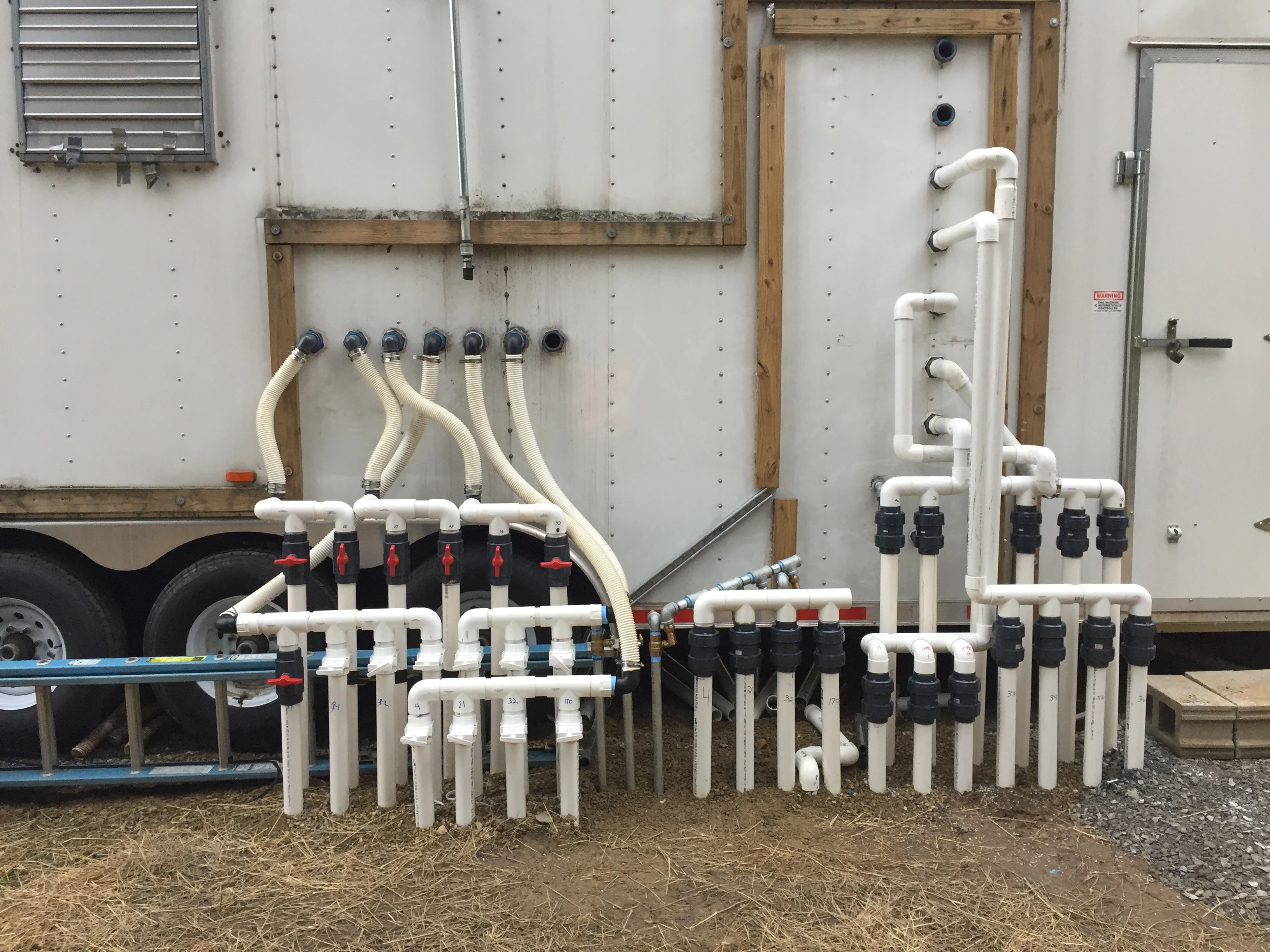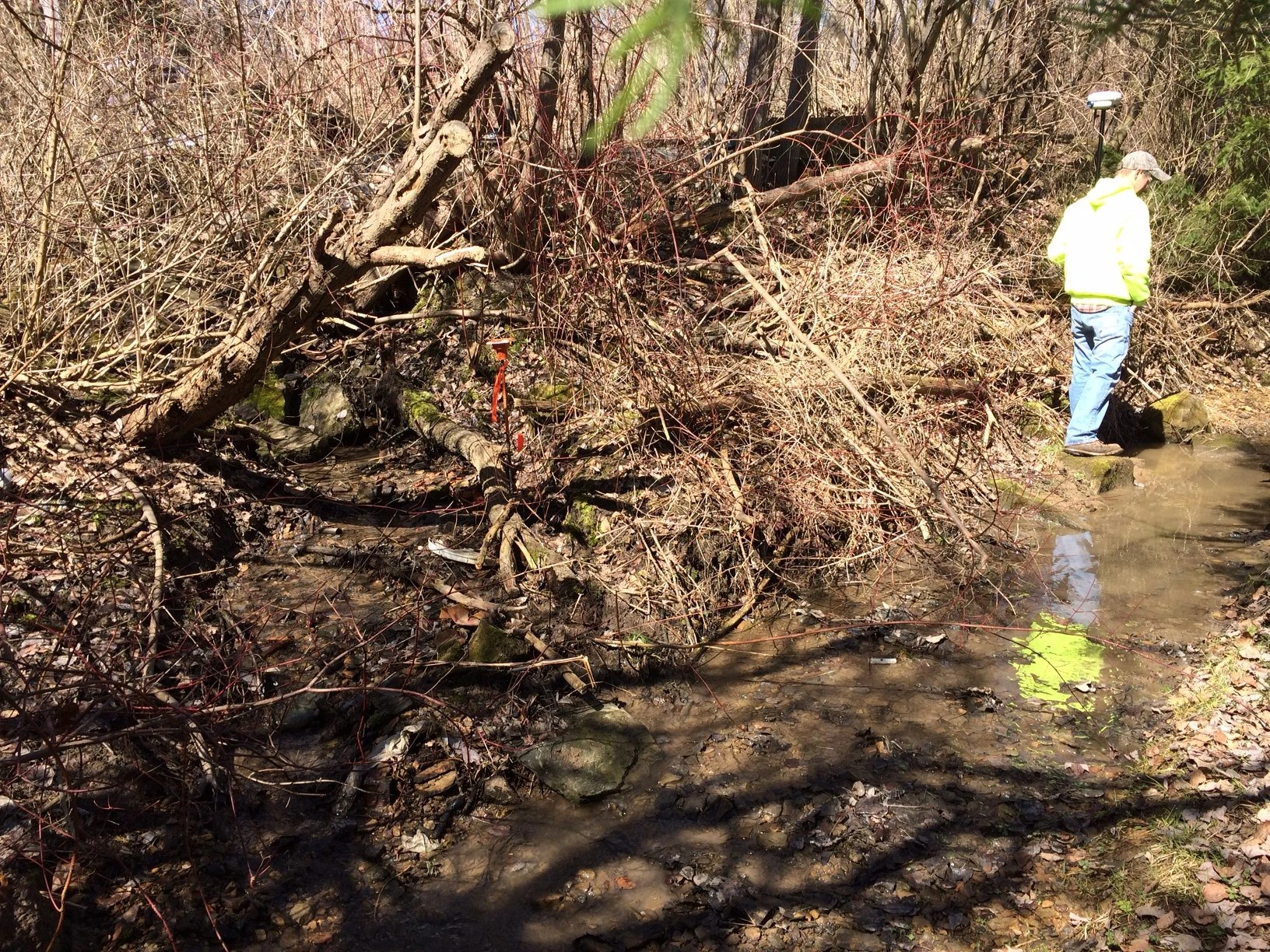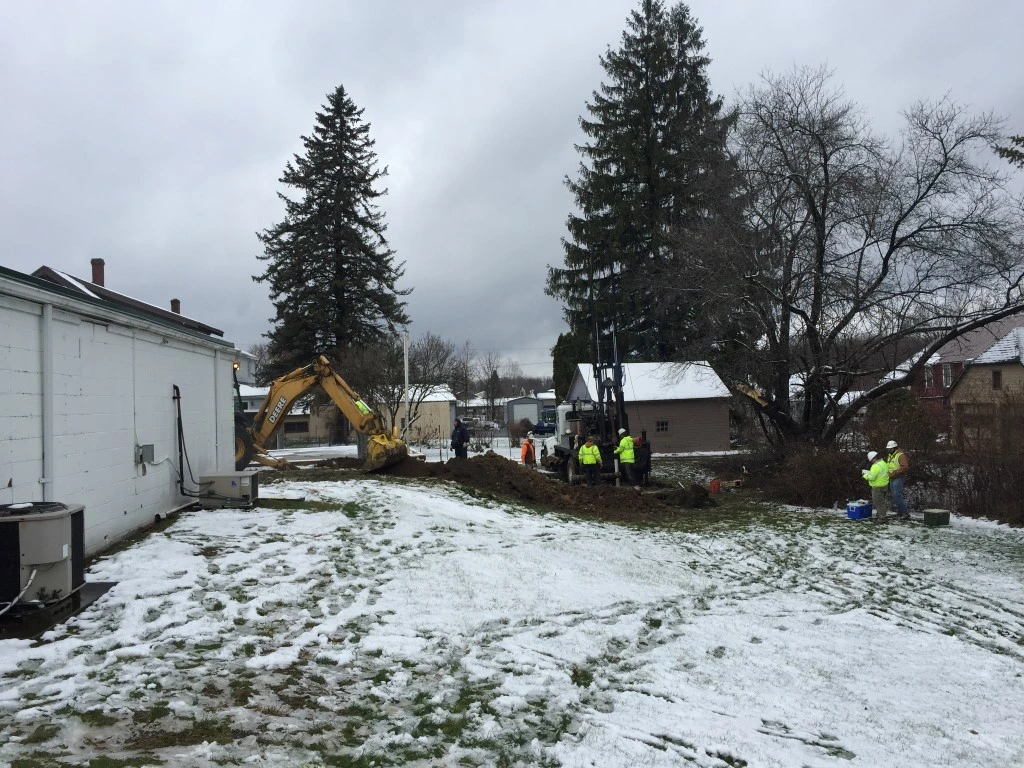Rapid Response, Vapor Mitigation, and Remediation at a Former Retail Petroleum Station
GES initiated rapid response activities immediately following release confirmation to assess the source, extent, and nature of subsurface unleaded gasoline impacts both onsite and offsite on downgradient residential properties; and mitigate further source migration and vapor intrusion impacts. Following confirmation of vapor intrusion concerns in a residential neighborhood, GES field personnel monitored six sewer manhole locations on a 24-hour basis to ensure vapors were no longer accumulating in the sanitary sewer system, which was acting as a preferential migration pathway for vapor phase impacts associated with the release. Following 24-hour monitoring, GES personnel installed and then monitored ventilation blowers on a daily basis, which continued for five months. Vapor monitoring data confirmed that the ventilation blowers were effective in mitigating further vapor intrusion issues related to the sanitary sewer system.
Detailed conceptual site model (CSM) development, VEGE system operation, and implementation of project-area monitoring have provided a long-term remedy to mitigate vapor intrusion, remediate dissolved petroleum hydrocarbon impacts, and evaluate remedial progress. Within one and a half years, the remediation system recovered approximately 62 pounds of DPH and 849 pounds of vapor-phase hydrocarbons; vapor intrusion concerns have been mitigated; and the dissolved-phase groundwater plume has been significantly decreased.


